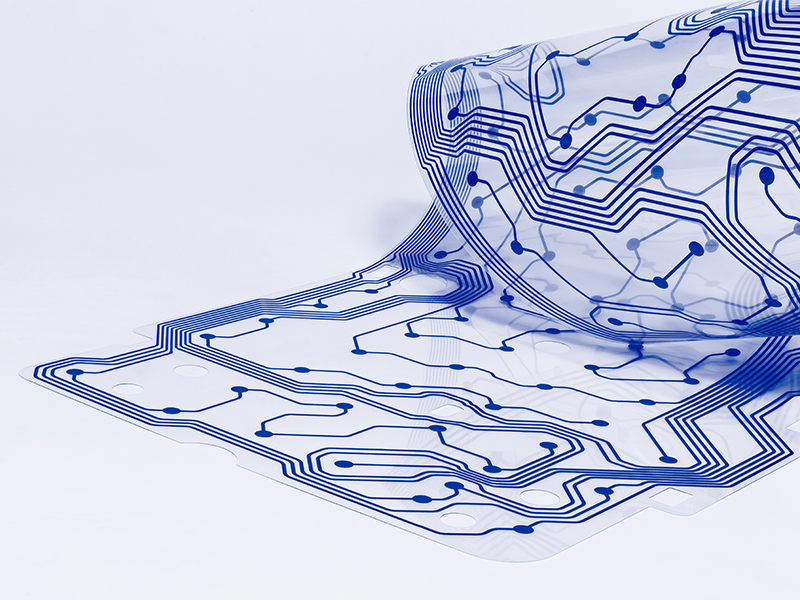Printing-equipment manufacturers offer specialized inks and systems for purposes other than than signs, displays, marketing collateral, published information, and packaging. For example, some printing equipment is specifically designed for decorating materials used in flooring, furniture, upholstery, windows, doors, and wall panels. Some industrial printing equipment uses conductive inks to make functioning electronic circuitry on flexible materials.
A new report from Smithers examines The Future of Industrial and Decorative Printing to 2029. The report covers market data and forecasts through 2029 segmented by process, application, and region.
The focus is on the rapidly emerging use of printing-for-profit in areas such as:
- decor
- ceramics
- printed electronics
- glass
- automotive printing
- biomedical and life science printing
- 3D printing
- inkjet-printed textiles
According to the report, the industrial and decorative printing market is worth $112.9 billion in 2024, with a growth rate to 2029 of 5.5% CAGR.
The largest share of this market (51%) is electronics, which is expected to achieve a growth rate of 6.8% CAGR between 2024 and 2029.

The Future of Industrial and Decorative Printing to 2029)
Trends and Opportunities
The report was authored by Jon Harper Smith, who has over 15 years of experience in the printing industry. He has worked with Fujifilm an industrial and package printing businesses with particular focus on industrial inkjet and flexo processes.
In a post on the Smithers website, Smith answers questions about trends and opportunities in industrial and decorative printing. Here are some excerpts:
Q. Which sectors are seeing the strongest growth for industrial and decorative print?
A. The segment with the highest growth rate is digital textile printing. It is forecast to grow by 9.5% CAGR in volume and 9.0% CAGR in value between 2024 and 2029. However, although digital textile the highest growth in absolute terms comes from printed electronics which will grow by $23.8 billion, a higher number than all other services combined.
Q. What key trends are impacting the market for industrial and decorative printing?
A. Suppliers have developed new equipment that widens the applications, with new inks, coatings and functional fluids providing new properties of flexibility, adhesion and durability.
There is very strong growth in digital methods with new inkjet inks and fluid opening many new opportunities for printing on plastic, film, glass,, wood, metal, ceramics, textiles, laminates, and composite substrates.
One of the megatrends impacting global development is the digitalization of manufacturing processes, the so-called Industry 4.0 techniques. Print and finishing can be part of this, with the print providing some additional benefits in many cases.
For example, the workflow controls unique decoration (such as a customized garment, kitchen backsplash, wallpaper, or even a car), then tracks the item as it is delivered to the consumer.
Q. What opportunities are there in industrial and decorating printing over the next five years?
A. There is consistent growth across most industrial functional print markets and regions, including the established analog processes. While the routes to market are very different to traditional printing, there are many opportunities for companies involved in the graphics and publication and print sectors as well as equipment and consumable suppliers.
Growing demand reflects increasing demand for construction, automotive and generally manufactured products that are increasingly incorporating print. The functional print market is extremely fragmented with many disparate organizations involved.
As well as manufacturers, there are start-ups that have identified applications and technology and are looking to exploit their expertise. There are also printing companies that are using their core printing skills in new markets. This development into industrial print applications is less common in Western markets but the situation is starting to shift as traditional publishing and commercial print continues to decline.
Q. What technical innovations can we expect to see?
A. Inkjet is the fastest growing process in functional industrial printing, and there are continual improvements in reliability, productivity and new inks and fluids, all of which will open up many applications.
Non-impact inkjet is very useful in industrial printing as the inks can be formulated to print onto virtually anything: the flexibility of inkjet allows irregular shaped objects with robotic carriers, or by moving the parts in from of the printhead.
Report: The Future of the Industrial and Decorative Printing to 2029
